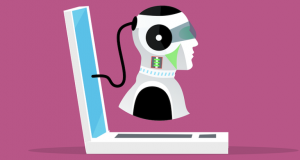 Out of the top 10 purposes for a robot, being a friend was ranked 4th highest behind chores, cooking food and driving
Out of the top 10 purposes for a robot, being a friend was ranked 4th highest behind chores, cooking food and drivingThey use a combination of CV information and gut responses in interviews to make their hiring choices; however, more and more companies are turning to specific technologies to make the decisions for them, and they are reaping the benefits.
Hiring the wrong talent can be a nightmare; in fact, for young tech and new start-ups, it can be a mistake so dear in time cost expenditure that it spells disaster. To avoid this pitfall, companies head to the professionals. By outsourcing, not only can a company carry on using its in-house talent to do what it does best but also it can also gain greater flexibility and access to a wealth of new recruitment technology.
Huge technological leaps in data science mean that applications and technologies have recently progressed from sifting CVs to essentially making the hiring decision themselves from scratch. While this might seem like the prologue to The Terminator, the evidence shows that robots are better at identifying the ‘right fit’ than their human counterparts.
Using information to identify attributes shared by the company’s most prized staff, programs can more easily initiate complex algorithms to seek out the same qualifiers in candidates. While humans trust their feelings and are easy to manipulate in interview situations, computers use cold hard facts to come to a decision.
How is a robot a better judge of a human than a human?
The buzz term is ‘predictive analytics’. By running the previous CVs or test results of the best staff the company has, and by identifying patterns in the results and answers, a program can ascertain which specifications to look for this time.
Once the specifications have been identified, the system assesses the potential candidates for success and reports on the findings. The data the program uses could be anything your candidates are willing to share, from CV data to business networking or social media page information. The only imperative is that the data that goes in must match the data type to which it is being compared.
The report then ranks the candidates in order of preference. Naturally, most bosses still want to make the final choice.
Why trust a computer over your instinct?
Most managers will make the valid argument that they chose the successful candidates in the first place, so why not let them choose again? Getting the best and brightest, the right fits and the stand-outs is not a numbers game in the same way as picking up a phone to make cold call sales. Bright stars in your company might only currently make up 10% of your work force; therefore, in the field of hiring, your human decision-making has a 90% chance of getting it wrong.
While there are still many angles to consider, from the ethical to the practical, one thing is for sure: candidates are becoming shrewder at knowing how to tell a hiring manager what they want to hear. This piece of technology is one more tool in the workbox, allowing you to make the right decisions for you company and your colleagues.
Join Over 40,000 Recruiters. Get our latest articles weekly, all FREE – SEND ME ARTICLES
Recruiters love this COMPLETE set of Accredited Recruitment & HR Training – View Training Brochure








